Have you noticed unusual bumps and keloids forming around your belly button piercing? You’re not alone. While body piercings are a popular way to express individuality, they can sometimes lead to complications — particularly in the navel area, where the skin is more prone to trauma and irritation.
If you’re seeing raised, firm growths forming weeks after the piercing, you might be dealing with a keloid. These scar-like growths can be frustrating, but don’t worry — treatment options are available. Read on to learn what causes them, how to treat them, and how to reduce your risk moving forward.
Can You Get a Keloid on Your Belly Button Piercing?
Yes, you can get a keloid on your belly button piercing. A keloid is a type of raised scar that grows excessively beyond the original wound area. In contrast, a hypertrophic scar stays within the bounds of the injury. Keloids may appear weeks after the piercing, often growing in size over time. While not everyone develops them, individuals with certain genetic predispositions are more at risk. Once a keloid forms, it usually requires medical treatment to reduce or remove it.
Causes of Keloids from Belly Button Piercings
While belly button piercings are a stylish form of self-expression, they can sometimes lead to complications like excessive scar tissue and even keloid formation. Understanding what causes these reactions is the first step in preventing them. Several factors — from genetics to hygiene — can influence how your skin heals and whether a keloid develops.
Individual Predisposition
Some people are simply more prone to keloids than others due to their genetic makeup. If you have a family history of keloids or have developed one from a previous wound or piercing, your risk is significantly higher. People with darker skin tones are also statistically more likely to develop keloids. This individual predisposition means that even with perfect aftercare, a belly button piercing could still result in a keloid for those who are genetically susceptible.
Improper Aftercare and Hygiene
Failing to properly care for your belly button piercing can significantly disrupt the healing process and increase the chances of keloid development. Inadequate hygiene, touching the area with dirty hands, or using harsh products can irritate the skin. Cleaning the piercing site regularly with a sterile saline solution helps minimize infection and supports optimal healing. Neglecting these aftercare essentials may cause inflammation, which can trigger the body to produce excess scar tissue, potentially leading to a keloid.
Allergic Reactions to Jewelry
Wearing jewelry made from reactive metals like nickel can provoke an allergic response in some individuals. This reaction can cause redness, itching, and inflammation around the piercing site, which disrupts healing and increases the risk of abnormal scar development. When the immune system reacts strongly, the skin may overcompensate by forming excess tissue, contributing to keloid growth. To avoid this, opt for jewelry made of hypoallergenic materials such as titanium or surgical-grade stainless steel.
Infection and Contact Dermatitis
The navel area is particularly prone to infection due to its shape and limited airflow. If bacteria enter the piercing site, the resulting infection can cause redness, swelling, and pain — all of which are signs of infection. Left untreated, this irritation can escalate into more serious complications, including keloid formation. In some cases, contact dermatitis triggered by skincare products or harsh soaps may mimic infection symptoms and also disrupt healing. Early detection and proper care are essential to prevent long-term scarring.
Keloid Removal Before and After Pictures



*All patients are unique and individual results may vary.
Keloid Removal Treatments for Belly Button Piercings
When a keloid forms on a belly button piercing, it often requires professional intervention to resolve. Fortunately, there are several proven treatment options available. These methods work in different ways to flatten, shrink, or remove keloids — and in some cases, they can be combined with radiation treatments to improve outcomes and prevent recurrence. Choosing the right approach depends on the size, location, and severity of the keloid, as well as your skin’s response to previous treatments.
Steroid Injections
Corticosteroid injections are one of the most common and effective treatments for keloids. These anti-inflammatory medications are injected directly into the scar tissue to reduce swelling, flatten the keloid, and relieve associated discomfort. Multiple sessions may be required, typically spaced a few weeks apart, to achieve the best results.
While not a permanent cure, corticosteroid injections can significantly shrink keloids and improve their appearance over time, making them a popular first-line approach for managing belly button piercing complications.
Cryotherapy
Cryotherapy involves freezing the keloid using liquid nitrogen, which destroys the excess scar tissue by causing it to blister and fall off gradually. This treatment is especially effective for smaller keloids and may be used in combination with other therapies, such as corticosteroid injections, for improved results.
While cryotherapy can reduce the size and firmness of a keloid, multiple sessions are usually required, and there is a risk of temporary skin discoloration in the treated area.
Laser Therapy
Laser therapy uses focused light energy to break down the dense collagen that forms keloids. This treatment can reduce the keloid’s size and improve skin texture and color. While laser therapy alone may not completely eliminate a keloid, it is often effective when combined with other treatments like corticosteroid injections.
The number of sessions required depends on the severity of the scar and the individual’s skin response, but many patients see noticeable improvements with consistent care.
Surgical Removal
Surgical removal involves excising the keloid completely from the affected area. While this method can provide immediate results, it’s often most effective when combined with other treatments, such as corticosteroid injections or radiation therapy, to reduce the risk of recurrence.
Surgery is typically reserved for larger or more persistent keloids that haven’t responded well to other methods. Because surgery can sometimes stimulate new scar tissue growth, it must be approached carefully by a skilled specialist familiar with keloid-prone skin.
Silicone Gel Sheeting
Silicone gel sheeting is a non-invasive treatment that involves applying soft, flexible sheets over the keloid to flatten and fade the scar over time. This method works by hydrating the scar tissue and applying light pressure, which helps soften the keloid and reduce its visibility.
It’s most effective on smaller or newer keloids and is often used after surgery to prevent regrowth. While results may take several weeks to appear, this option is popular for its ease of use and minimal side effects.
Pressure Therapy
Pressure therapy involves the application of consistent pressure to the keloid using specialized garments or dressings. This technique helps flatten the scar over time by reducing blood flow to the area, which slows the production of excess collagen.
Pressure therapy is often used following surgical removal to prevent the keloid from returning and is especially effective when used as part of a comprehensive treatment plan. Though it requires patience and commitment, it can yield long-term benefits in managing keloid-prone areas like the navel.


SPECIALIST CARE YOU CAN TRUST
Dr. Salloum is supported by a brilliant team of caring staff members.
You can trust the entire staff to help make your visit as comfortable and safe as possible!
Reducing the Risk of Developing Piercing-Related Keloid Scars
Preventing keloids before they form is far easier than treating them after the fact. Whether you’re considering a new belly button piercing or caring for a recent one, following a few key tips can significantly lower your chances of complications. While no method guarantees complete prevention, taking proactive steps can make a big difference.
Choose Only Professional Piercers
Choosing a professional piercer isn’t just a good idea — it’s essential for minimizing your risk of complications. Licensed piercers follow strict hygiene protocols, use sterilized equipment, and understand optimal piercing placement to avoid unnecessary trauma.
These factors play a critical role in how your skin heals and whether it forms a normal scar or a keloid. An experienced piercer can also guide you on proper aftercare, making the entire process smoother and safer from the start.
Use Hypoallergenic Jewelry
Using hypoallergenic jewelry is one of the simplest yet most effective ways to avoid unwanted skin reactions and minimize the chance of keloid development. Materials like titanium, niobium, and surgical-grade stainless steel are less likely to irritate the skin or trigger allergies.
These types of jewelry help the piercing heal more smoothly and reduce the likelihood of inflammation — a common precursor to keloid formation. Making the right choice from the beginning can help keep your healing process on track.
Follow Aftercare Instructions
Adhering to proper aftercare guidelines is critical for minimizing irritation and encouraging healthy healing. Clean the area with a sterile saline solution and avoid using alcohol or hydrogen peroxide, which can dry out the skin. Keeping the piercing dry is also key — especially after showers — so covering it with a waterproof bandage during water exposure is a smart precaution. Skipping these steps may lead to complications, including infections and increased chances of keloid formation.
Protect Your Skin From the Sun
Sun exposure can darken scars and make them more noticeable, especially during the healing process. Ultraviolet (UV) rays may also cause inflammation, which could trigger excessive scar tissue formation in those predisposed to keloids. To protect your skin, apply sunscreen with a high SPF around the piercing area and keep it covered when spending extended time outdoors. This simple step can support healthier healing and reduce the risk of pigmentation changes that draw attention to the scar.
Avoid Excessive Movement or Trauma to the Piercing
Minimizing movement and protecting the area from skin trauma is crucial for proper healing. Repeated irritation or tugging on the piercing can convert a minor wound into a more serious injury, increasing the risk of abnormal scar development. Even routine activities, like changing clothes or sleeping on your stomach, can cause micro-tears or stress the area. By avoiding unnecessary strain and keeping the piercing safe from bumps and snags, you can help your skin heal without triggering a keloid response.
Consult with a Keloid Expert Today
Choosing the right professional to treat a keloid is essential for safe and effective results. Keloids can be stubborn, and improperly managed treatment can lead to recurrence or further skin irritation. That’s why it’s crucial to work with a qualified specialist who understands both the cosmetic and medical aspects of scar revision.
At the Miami Center for Plastic Surgery, Dr. Gabe Salloum brings years of experience and double-board certification to every case. Known for his meticulous technique and compassionate approach, Dr. Salloum has helped countless patients safely and successfully remove keloids caused by body piercings. Call us today at 305-405-6910 or visit our contact page to schedule your consultation.